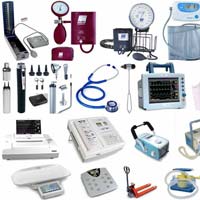The history should include the following, the time course and distribution of rash/lesion(s), the symptoms the patient was having such as an itch or pain, family history (e.g. atopy and psoriasis), drug/allergy history (oral and topical medication), general medical history, provoking factors such as sunlight or medication, occupational, recreational and travel history. Examination entails careful inspection of the whole skin, looking and feeling, and should include nails, hair and mucosal surfaces. The https://www.teammed.com.au/shop/diagnostic_equipment/ is a useful tool which is being used to diagnose various dermatological conditions in the modern day. The following terms are used to describe distribution: flexural, extensor, acral (hands and feet), symmetrical, localized, widespread, facial, unilateral, linear, centripetal (trunk more than limbs), annular and reticulate (lacy network or mesh-like).With an average surface area of 2 m2 in the adult, the skin is the largest organ in the human body. It consists of three main layers: the epidermis, the dermis and the subcutis. Using modern day dermatology tools all of the above mentioned layers can be visualized. All for the purpose of better diagnosis and treatment of the various skin conditions. and this has meant that doctors have a better approach to the various conditions and can make a more accurate diagnosis than in the days gone by.
Giving the patients a better chance of being managed more accurately and much more efficiently. Skin diseases are common throughout the world. In the UK, they account for about 1 in 10 consultations in primary care. In tropical and often poorer areas, infections such as leprosy and onchocerciasis predominate, while in more affluent temperate countries, chronic inflammatory disorders such as atopic eczema occur most commonly. Skin disorders can be an isolated complaint, part of an inherited disorder such as Ehlers–Danlos syndrome, or a feature of systemic disease such as systemic lupus erythematosus (SLE). The common presenting symptoms of a rash or lesion(s) are itch, pain, disturbed sleep and anxiety/psychological upset. Because of their visibility, skin diseases can affect self-esteem and quality of life. They may also impair the ability to work: for example, hand eczema in a chef. Skin disease is rarely life-threatening, although, for example, malignant melanoma, toxic epidermal necrolysis and pemphigus can be fatal.The functions of the skin include acting as a physical barrier against friction and shearing forces, protection against infection (immune and innate), chemicals, ultraviolet irradiation, prevention of excessive water loss or absorption, ultraviolet-induced synthesis of vitamin D, temperature regulation, sensation (pain, touch and temperature), antigen presentation/immunological reactions/wound healing, hormonal, e.g. testosterone synthesis.
